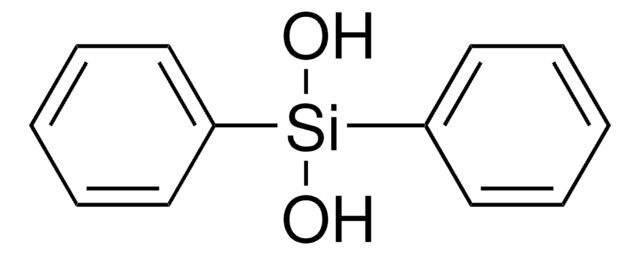475149
3-(Trimethoxysilyl)propyl acrylate
92%, contains 100 ppm BHT as inhibitor
Synonym(s):
(3-Acryloyloxypropyl)trimethoxysilane
About This Item
Recommended Products
Quality Level
assay
92%
contains
100 ppm BHT as inhibitor
refractive index
n20/D 1.429 (lit.)
bp
68 °C/0.4 mmHg (lit.)
density
1.055 g/mL at 25 °C (lit.)
SMILES string
CO[Si](CCCOC(=O)C=C)(OC)OC
InChI
1S/C9H18O5Si/c1-5-9(10)14-7-6-8-15(11-2,12-3)13-4/h5H,1,6-8H2,2-4H3
InChI key
KBQVDAIIQCXKPI-UHFFFAOYSA-N
Looking for similar products? Visit Product Comparison Guide
General description
signalword
Danger
hcodes
Hazard Classifications
Acute Tox. 4 Inhalation - Aquatic Chronic 3 - Eye Dam. 1 - Skin Corr. 1B - Skin Sens. 1
Storage Class
8A - Combustible corrosive hazardous materials
wgk_germany
WGK 3
flash_point_f
253.4 °F - closed cup
flash_point_c
123 °C - closed cup
ppe
Eyeshields, Gloves, type ABEK (EN14387) respirator filter
Choose from one of the most recent versions:
Already Own This Product?
Find documentation for the products that you have recently purchased in the Document Library.
Customers Also Viewed
Our team of scientists has experience in all areas of research including Life Science, Material Science, Chemical Synthesis, Chromatography, Analytical and many others.
Contact Technical Service




![3-[Tris(trimethylsiloxy)silyl]propyl methacrylate contains MEHQ + HQ as stabilizer, 98%](/deepweb/assets/sigmaaldrich/product/structures/148/664/33ff5116-f264-4a64-824a-009c2ca5b2b3/640/33ff5116-f264-4a64-824a-009c2ca5b2b3.png)





![N-[3-(Trimethoxysilyl)propyl]aniline](/deepweb/assets/sigmaaldrich/product/structures/170/332/13339984-ddd1-4aef-b259-3b45216b9ab9/640/13339984-ddd1-4aef-b259-3b45216b9ab9.png)